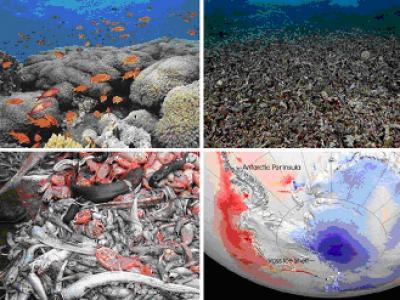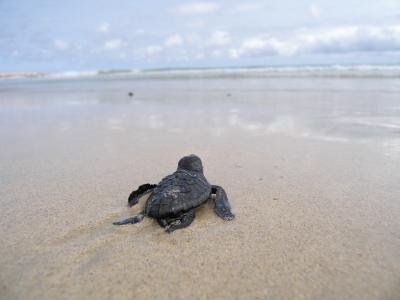Habitual intake of caffeinated beverages provides protection against heart disease mortality in the elderly, say researchers at SUNY Downstate Medical Center and Brooklyn College.
Using data from the first federal National Health and Nutrition Examination Survey Epidemiologic Follow-up Study, the researchers found that survey participants 65 or more years old with higher caffeinated beverage intake exhibited lower relative risk of coronary vascular disease and heart mortality than did participants with lower caffeinated beverage intake.
 The viability of many marine and terrestrial species could be impaired due to interacting human activities that cause the loss of species' habitats, overexploitation of their populations and warming of their environments. Credit: Top left: John Veron from Corals of the World.
The viability of many marine and terrestrial species could be impaired due to interacting human activities that cause the loss of species' habitats, overexploitation of their populations and warming of their environments. Credit: Top left: John Veron from Corals of the World. Marine turtle. Credit: Copyright Lucy Hawkes, MTRG
Marine turtle. Credit: Copyright Lucy Hawkes, MTRG